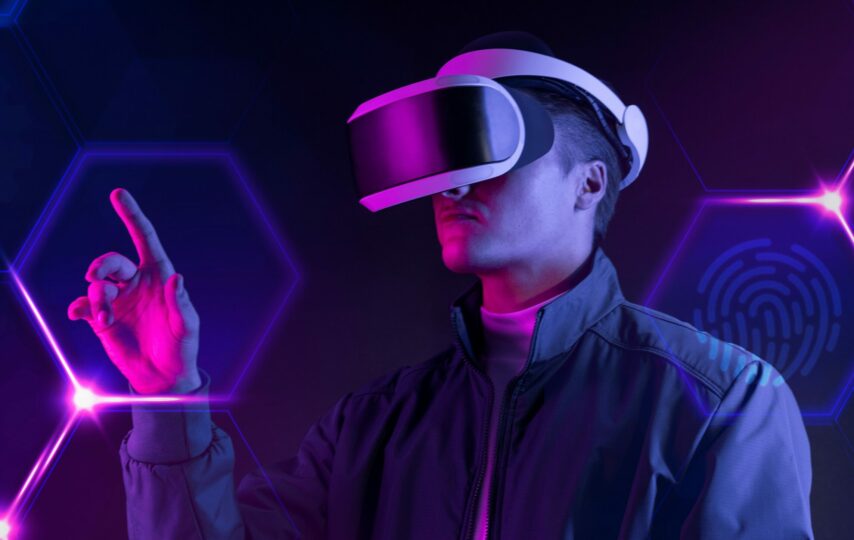Alex Kipman has spent most of his past 12 years focused on Microsoft’s suite of mixed-reality technologies, including the development of the company’s HoloLens. His vision for mixed reality has always been a medium that moves people from solitary experiences – single person, single device – into content placed over the real world to create an environment fine-tuned for collaboration. The starting point was the headset, which allows people to see the content. Next, came the Metaverse. Metaverses are not something that the average person fully understands, and when they hear this term, they may have many questions, including what a metaverse is, how it may be used in the future, and why it may be important. Read on as Alex Kipman tells you more about what a Metaverse is and how it may shape the future.
Alex Kipman Explains What a Metaverse Is
Metaverse comes from the prefix meta (meaning beyond) and verse, a shortened form of universe. The term refers to the concept of a virtual shared space – in essence, a world where reality could be virtually enhanced.
“Imagine walking down the street. Suddenly, you see something you want. You glance at it and gesture to it and immediately next to you, a vending machine appears, filled with the product and variations you were glancing at. You stop, pick an item from the vending machine, it’s shipped to your house, and then you continue on your way.”
But the Metaverse as a concept can be complicated to brand. Is it the same as virtual reality? Digital twins? Augmented reality? Massively multiplayer online games (mmo)? Spatial internet? Web 3.0?
One of the best ways to describe the Metaverse, is basing the definition on a series of core attributes:
- Persistent: It never “pauses” or “ends,” it just continues indefinitely
- Open Participation: Everyone can be part of it, no gatekeeping
- Value Economy: Sense of “value” or currency must exist
- Duality: Spans both the digital and physical worlds
- Interoperability: Allows transfer of assets across worlds (i.e. buy a Sofi Tukker t-shirt on metaverse 1 today, wear it proudly in your metaverse 2 tomorrow)
- Active Contribution: Ability for creators to build and expand the universe
This vision is not some cryptic dystopian reality – in fact, it’s an arguably normal one, predicated on lots of things we’re already doing today with tools like Zoom or Teams.
Understanding it as an extension of the human experience gives us a small primer on why this entire concept gets a lot of people excited. The reasons stem from the possibilities, but also the psychology of games we’ve played forever, even before the days of Minecraft of Pokemon Go.
Alex Kipman Answers How a Metaverse May Be Used in the Future
Imagine how through metaverses, colleagues from across the globe will be able to collaborate as if they’re physically there. In a world of hybrid work where ‘here’ can be anywhere and headquarters are no longer tied to a single location, metaverses will allow organizations to host mixed reality gatherings with everyone in the same room.
Think about how people will be able to learn together from anywhere sharing the common perspective so critical when learning complex topics. First respondents will have access to remote experts everywhere they’re needed, sharing insights quickly and effectively, ultimately keeping people safer and resolving issues faster.
Imagine putting on concerts in the Metaverse. Instead of getting in your car and driving to a concert venue, you can put on a virtual reality headset and attend a concert, all from the comfort of your home. This allows people to see their favorite artist, regardless of where in the world the artist is performing. Other things like visiting an amusement park, may also take place in the metaverse.
Alex Kipman Details Why a Metaverse May Be Important to the Future
Metaverses should have benefits for all, they should expand access, opportunity, social networks, and mental health — though that future depends to a great extent on how we, the creators, implement it, and today a lot of the good the metaverse can do is still speculative and depends on a confluence of events, ethics, and openness.
What already exists for sure, is the already realized potential for metaverses to increase empathy and inspire kindness. A few years ago, a surreal YouTube video made its way around the internet. In the middle of a standard VRChat session, a person who was wearing a full body tracking suit apparently had a seizure. The episode underscored not only the actual distance between people in virtual spaces but also the outpouring of concern for the person behind a red robot avatar.
This upcoming shift in technologies has a chance to shape a more inclusive mission and purpose for technology. This year at Art Basel in Miami, a good indicator of where society is going, two of the most talked about experiences were Vestige and Breonna’s Garden. Vestige is a documentary that uses multi-narrative and volumetric live capture to take the viewer on a journey into the mind of Lisa as she remembers her lost love, Erik. New memories are triggered as we navigate the space to explore these moments, revealing new pathways through the story. Breonna’s Garden is a revolutionary framework for veneration and celebration of life through AR. As a sacred space in both the physical and digital world, the Garden is brimming with some of Breonna’s favorite things both real and virtual, including flowers and butterflies.
But it’s not just about memories or empathy. The metaverse also gives us an opportunity to create the future of computing in a diverse way. When we look at the architects of the internet, they were mostly men. The Metaverse gives us an opportunity to shape the next version of the internet with a lot more diverse people and diverse thoughts.








